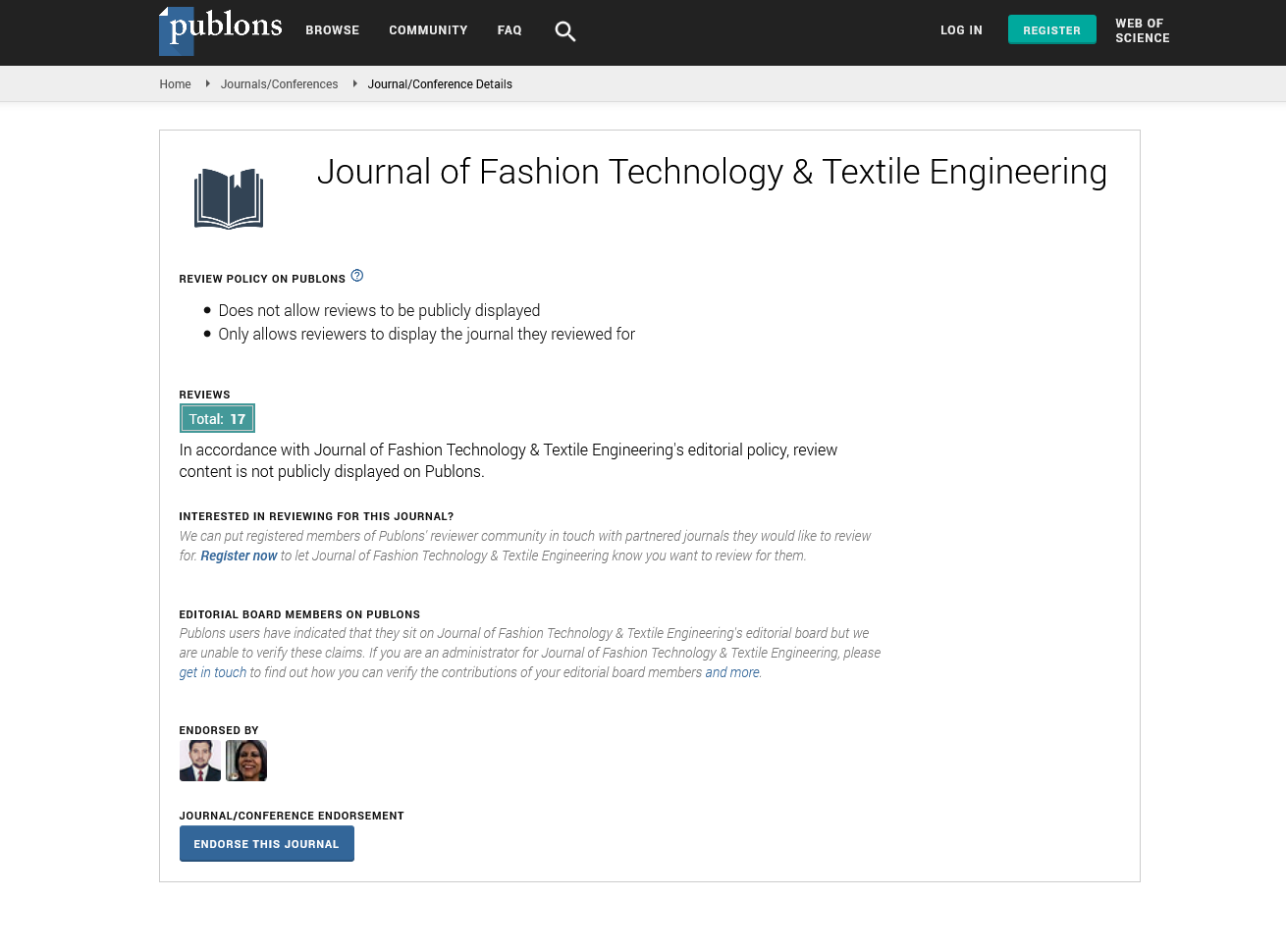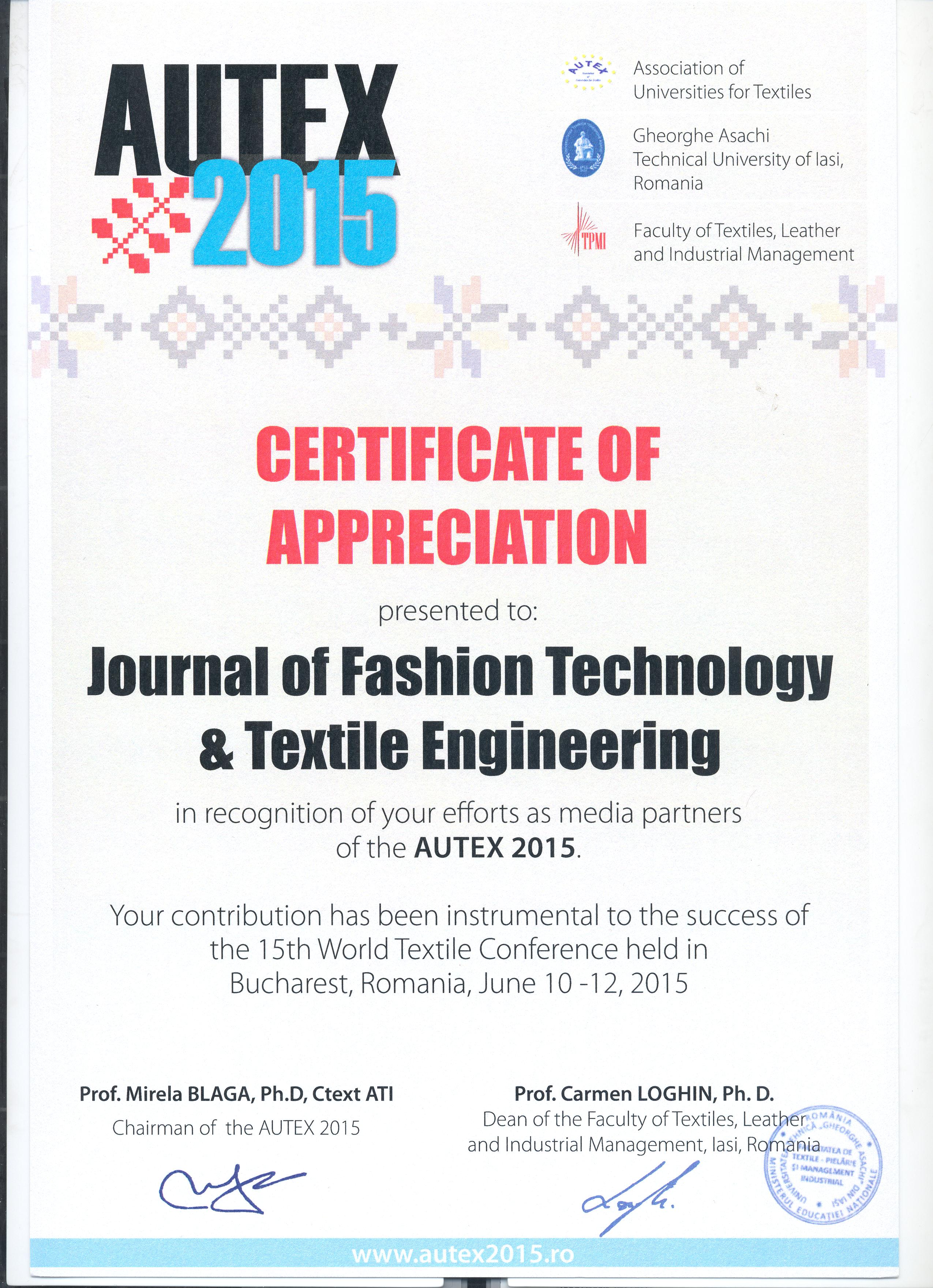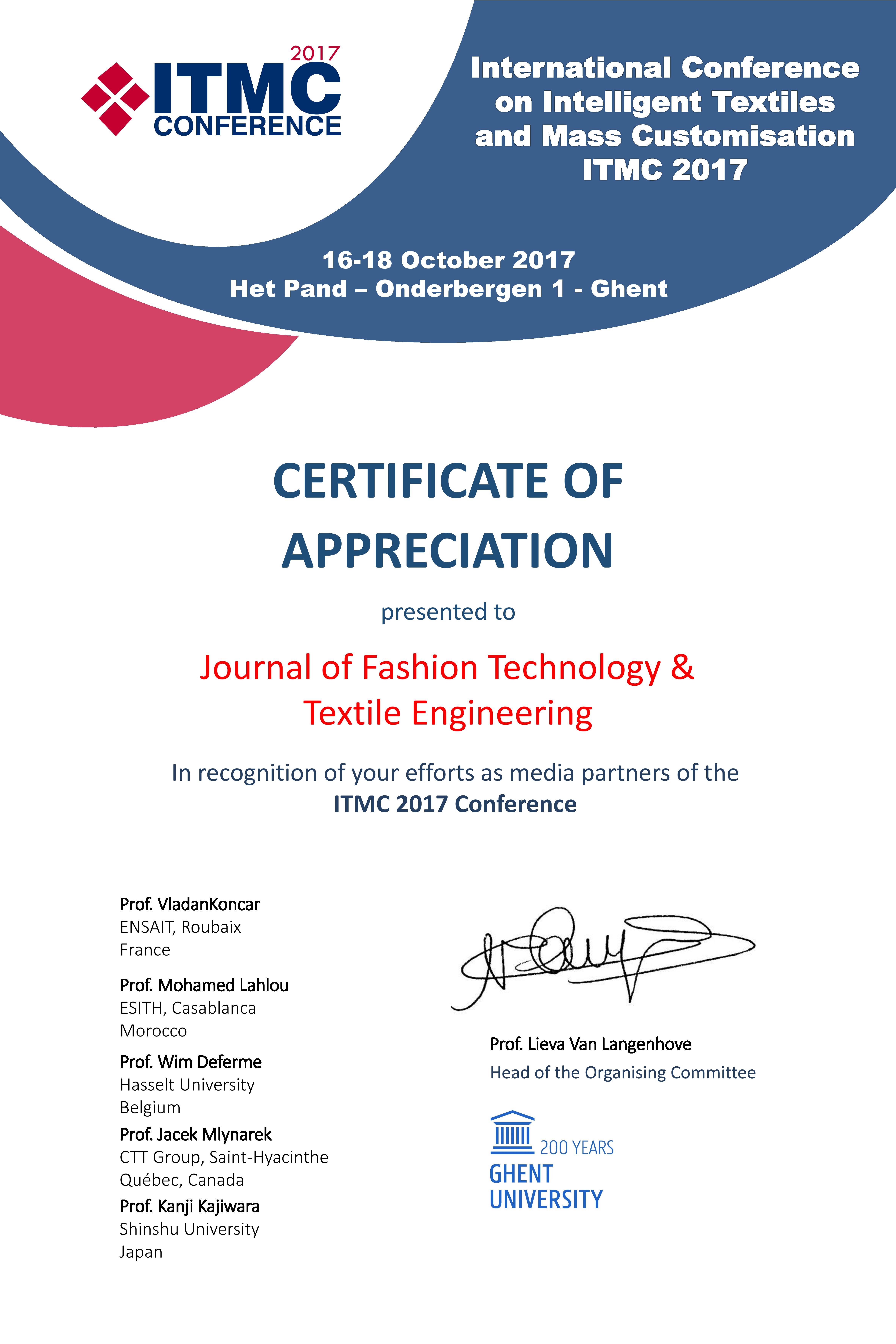Perspective, J Fashion Technol Textile Vol: 12 Issue: 6
Analyzing the Impact of Smart Clothing in Modern Society
Emie Shampison*
1Department of Fashion Design and Technology, Hong Kong Polytechnic University, Hong Kong
*Corresponding Author: Emie Shampison,
Department of Fashion Design and
Technology, Hong Kong Polytechnic University, Hong Kong
E-mail: emie_shampison59@gmail.com
Received date: 26 November, 2024, Manuscript No. JFTTE-24-155268;
Editor assigned date: 28 November, 2024, PreQC No. JFTTE-24-155268 (PQ);
Reviewed date: 12 December, 2024, QC No. JFTTE-24-155268;
Revised date: 20 December, 2024, Manuscript No. JFTTE-24-155268 (R);
Published date: 27 December, 2024, DOI: 10.4172/2329-9568.1000390.
Citation: Shampison E (2024) Analyzing the Impact of Smart Clothing in Modern Society. J Fashion Technol Textile 12:6.
Description
Smart clothing is a revolutionary development in the fashion industry that integrates technology into fabric to enhance functionality, comfort and performance. This new border in wearable technology has expanded beyond the field of fitness wearables, such as smartwatches and is now effortlessly incorporated into everyday clothing. With the union of textiles and electronics, smart clothing is transforming the way interact with our clothes and opening up new possibilities for health monitoring, environmental sustainability and personal expression. One of the key features of smart clothing is its ability to monitor the individual’s health and provide real-time data. This has significant implications for the healthcare sector, as smart fabrics can track vital signs such as heart rate, body temperature and even blood pressure. These clothes are embedded with sensors that capture physiological data, which is then transmitted to a connected device, such as a smartphone or smartwatch, where the individual can monitor their health. This technology is particularly beneficial for people with chronic conditions or those in need of constant health monitoring, as it provides valuable insights into their well-being. Some garments are even equipped with Electrocardiogram (ECG) sensors or motion sensors, allowing for more detailed tracking of physical activity and early detection of potential health issues.
In addition to health applications, smart clothing is being used to improve athletic performance. Athletes can now wear clothing that tracks their movements and measures the intensity of their workouts. These garments use sensors to monitor muscle activity, posture and the efficiency of physical movements. With this data, athletes can gain valuable feedback to improve their performance and prevent injuries. Smart workout clothes can also provide real-time alerts if the individual is exceeding themselves or needs to adjust their posture. This level of monitoring enhances training routines by allowing athletes to optimize their routines based on data intuition. Smart clothing is its ability to enhance the individual comfort and accessibility. Clothing with temperature-regulating properties can adjust based on the external environment. Smart jackets, shirts or pants can be equipped with heating or cooling elements allowing them to adapt to the individual body temperature. This feature is particularly useful in extreme weather conditions, where traditional clothing may fail to provide adequate protection. Some smart garments even allow the individual to control the temperature settings through a smartphone app, providing a personalized and dynamic solution to comfort. This adaptability can make smart clothing an essential part of outdoor activities, travel and daily life.
The fashion industry being one of the largest polluters globally, the demand for more sustainable and energy-efficient garments is growing. Smart clothing can play a role in this by providing solutions that reduce waste and extend the lifespan of garments. For instance, clothing equipped with self-cleaning technology uses nanomaterials that break down dirt and stains, reducing the need for frequent washing and in turn, saving water and energy. Additionally, some smart fabrics are designed to be durable and resistant to wear and tear, ensuring that garments last longer and do not end up in landfills prematurely. This supports with the growing trend toward circular fashion, where garments are made to be reused, recycled, or repurposed by incorporating embedded sensors, smart clothing can detect the individual’s activity level and provide tailored feedback. As more companies invest in research and development, the range of personalized features in smart clothing is likely to expand, giving consumers a more interactive and adaptive fashion experience.
Conclusion
These garments provide numerous benefits, ranging from health monitoring and enhanced athletic performance to improved comfort and sustainability. While challenges remain, the potential for smart clothing to revolutionize the way live and interact with our clothes is immense. Integrating technology into garments increases production costs, making smart clothing more expensive than conventional clothing. Additionally, issues related to the longevity of electronic components in clothing and maintaining the functionality of fixed devices can position problems for manufacturers and consumers. However, as technology advances and economies of scale are realized, it is expected that the prices of smart clothing will become more accessible and their durability will improve over time. The many benefits, the widespread adoption of smart clothing faces challenges, particularly in terms of cost and durability.
 Spanish
Spanish  Chinese
Chinese  Russian
Russian  German
German  French
French  Japanese
Japanese  Portuguese
Portuguese  Hindi
Hindi 


